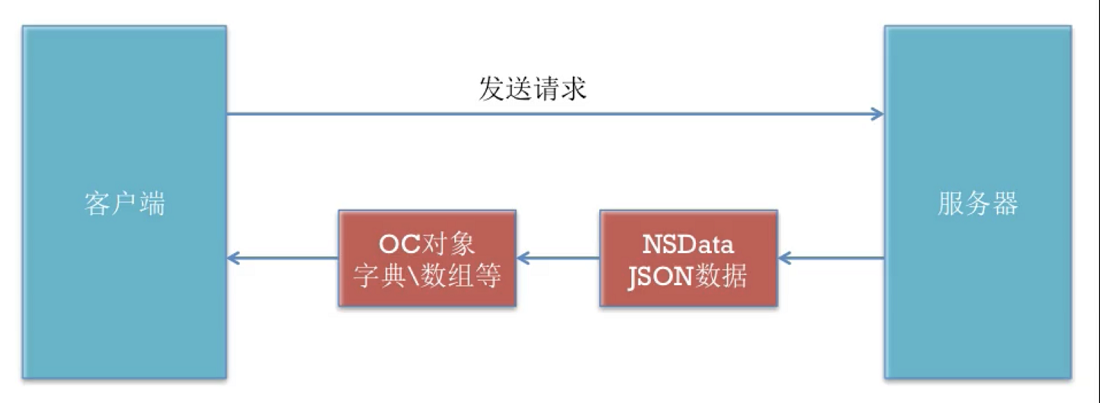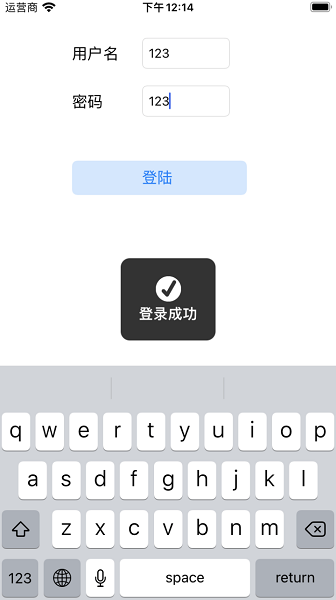一 概述
- 通过NSURLConnection发送异步网络请求
- 异步网络请求解析示例
二 概念
2.1 解析来自服务器的JSON

2.2 NSURLConnection发送请求
NSURLConnection常见的发送请求方法有以下几种
同步请求
+(NSData *)sendSynchronousRequest:(NSURLRequest *)request returningResponse:(NSURLResponse **)response error:(NSError **)error;
异步请求
block回调
+(void)sendAsynchronousRequest:(NSURLRequest *)request queue:(NSOperationQueue*)queue completionHandler:(void(^)(NSURLResponse* response,NSData* data,NSError* connectionError))handler;
2.3 注意事项
- 要想异步请求有数据,请求队列(queue)不要为空
- 异步完成后的请求队列一定是主线程(mainQueue),不然会出错
三 异步网络请求解析示例
3.1 代码
//3-发送用户名和密码给服务器
//NSLog(@"发送用户名和密码给服务器");
NSString *urlStr=[NSString stringWithFormat:@"http://localhost:8080/MJServer/login?username=%@&pwd=%@",usernameText,pwdText];
NSURL *url=[NSURL URLWithString:urlStr];
//创建一个请求
NSURLRequest *request=[NSURLRequest requestWithURL:url];
NSLog(@"begin---");
//发送一个同步请求(在主线程发送请求)
NSOperationQueue *queue=[NSOperationQueue mainQueue];
[NSURLConnection sendAsynchronousRequest:request queue:queue completionHandler:^(NSURLResponse * _Nullable response, NSData * _Nullable data, NSError * _Nullable connectionError) {
NSLog(@"请求完成----");
if (connectionError||data==nil) {
[MBProgressHUD showError:@"请求失败"];
return;
}
//解析服务器返回到JSON数据
NSDictionary *dict= [NSJSONSerialization JSONObjectWithData:data options:NSJSONReadingMutableLeaves error:nil];
//{"error":"用户名不存在"}
//{"error":"密码不正确"}
//{"success":"登陆成功"}
NSLog(@"解析后数据:%@",dict);
NSString *error=dict[@"error"];
if (error) {
[MBProgressHUD showError:error];
}else{
NSString *successs=dict[@"success"];
[MBProgressHUD showSuccess:successs];
}
}];
NSLog(@"end---");
3.2 效果图
